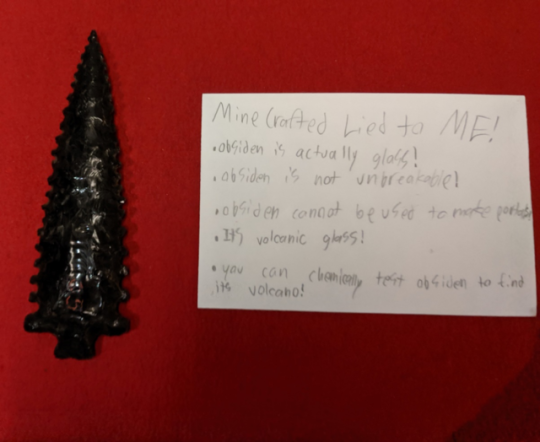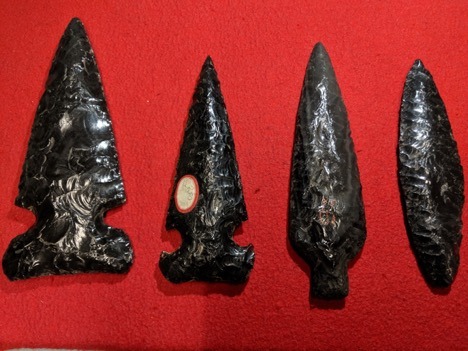On October 19, 2019, the Section of Anthropology once again had the pleasure of assisting the Education and Interpreter staff in awarding the BSA Scouts Merit Badge for archaeology. The Scouts spent the day learning how to excavate artifacts from dig boxes and creating mini-exhibits for museum visitors to enjoy. The mini-exhibits were focused on typology. Scouts were asked to organize lithics (mostly arrow heads and spear points) by physical characteristics. Stem and shoulder shape, cross section, and flaking styles are often used by archaeologists to categorize objects. Other basic morphological typology categories can rely on color, weight, or material.
The Scouts were asked to create labels for their mini-exhibits to explain the reasoning behind their classifications. Some Scouts organized objects by size, while others chose to compare the different shapes. One Scout was organizing objects by material, specifically obsidian. He asked if it was nearly indestructible like in Minecraft™ and I had to tell him that obsidian is actually volcanic glass that breaks pretty easily resulting in a conchoidal fracture, which is why people have made so many arrow heads and spear points out of it. He replied, “well, next you’ll tell me that it doesn’t create portals into a nether dimension.” Sorry Scout, to my knowledge it does not.

To investigate further into how obsidian is used in Minecraft™, I called the most knowledgeable gamer I know. My nephew, Zak, was happy to explain to me that in the game you combine lava and water to create obsidian blocks. This isn’t exactly true. Obsidian is formed when molten rock material cools so fast it cannot form a crystalline structure at an atomic level. It usually solidifies on the Earth’s surface, making it an extrusive rock. According to Zak, the obsidian in Minecraft™ can be used to create a very strong wall or to access the nether dimension that I had learned about from the Scout. Weapons are not made from it and it is very hard to break. In reality, obsidian is easily broken by human action and can also be worn down by the weather. This would make it a terrible substance from which to build a fortress. While obsidian is not used to build indestructible walls or portals, it is used to make surgical tools. It can be made sharper than steel and can be placed in scalpels for precision procedures. So, while the obsidian in Minecraft™is different than obsidian on Earth, at least it sparked a conversation.

The obsidian artifacts in this photo are a part of the educational collection maintained by the Section of Anthropology.
To learn more about the BSA Merit Badge for archaeology visit: https://meritbadge.org/wiki/index.php/Archaeology
To read another CMNH blog about obsidian visit: https://carnegiemnh.org/tag/emerald-obsidianite/
Amy L. Covell-Murthy is the Archaeology Collection Manager at Carnegie Museum of Natural History. Museum employees are encouraged to blog about their unique experiences and knowledge gained from working at the museum.
